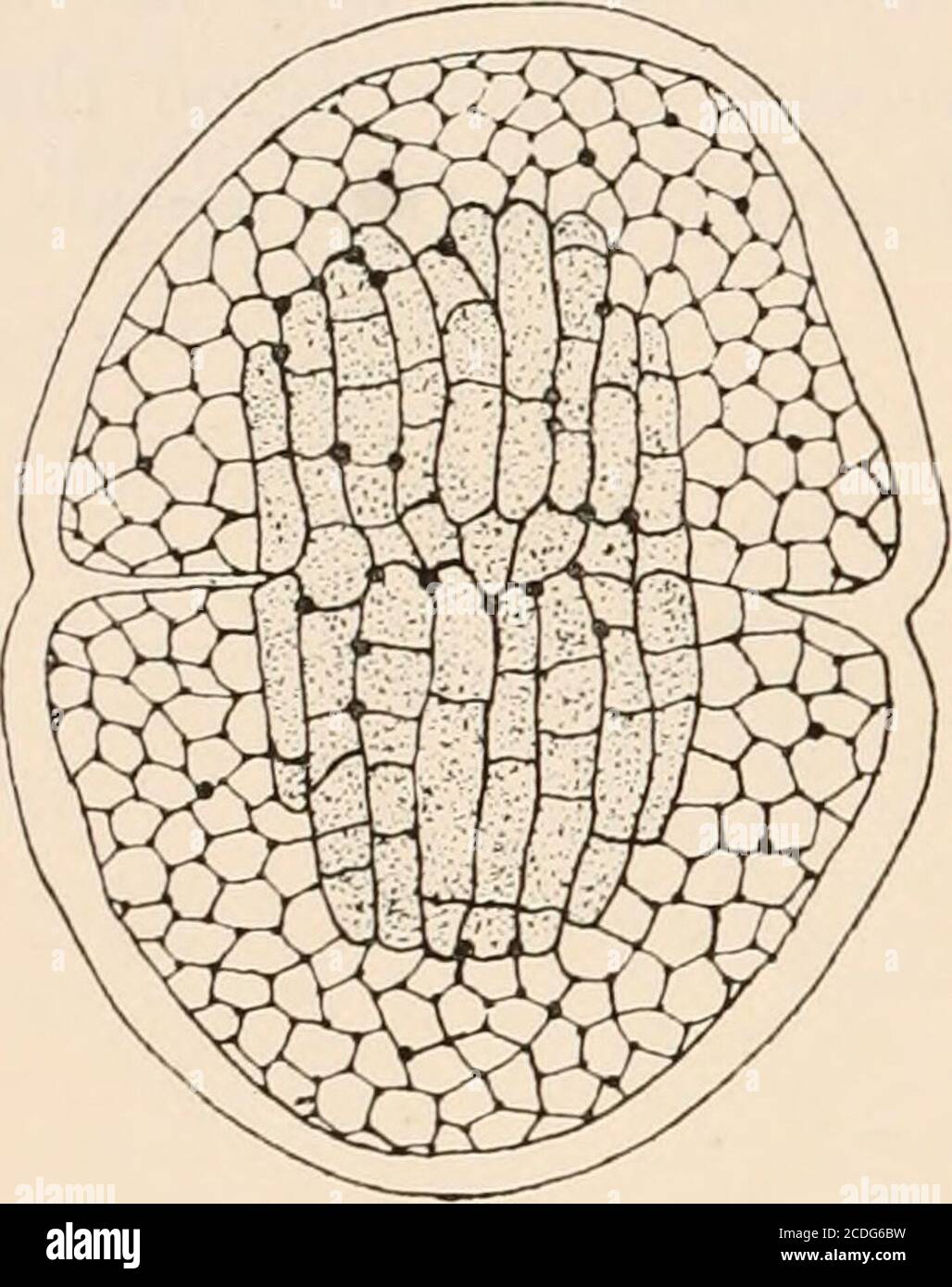. Algæ. Vol. I. Myxophyceæ, Peridinieæ, Bacillarieæ, Chlorophyceæ, together with a brief summary of the occurrence and distribution of freshwat4er Algæ . uter line marks the limit of the outer integument or investment(o.i.) of the cell, x 1000 (after a drawing by Miss Acton). central body) which from its position and relationship to the rest of theprotoplast is homologous with the nucleus. This body may be truly regardedas an incipient nucleus1, and the disagreements as to the details of itsstructure are probably due to two causes: first, to morphological misinter-pretations ; and secondly, to

Image details
Contributor:
Reading Room 2020 / Alamy Stock PhotoImage ID:
2CDG6BWFile size:
7.2 MB (303.6 KB Compressed download)Releases:
Model - no | Property - noDo I need a release?Dimensions:
1406 x 1778 px | 23.8 x 30.1 cm | 9.4 x 11.9 inches | 150dpiMore information:
This image is a public domain image, which means either that copyright has expired in the image or the copyright holder has waived their copyright. Alamy charges you a fee for access to the high resolution copy of the image.
This image could have imperfections as it’s either historical or reportage.
. Algæ. Vol. I. Myxophyceæ, Peridinieæ, Bacillarieæ, Chlorophyceæ, together with a brief summary of the occurrence and distribution of freshwat4er Algæ . uter line marks the limit of the outer integument or investment(o.i.) of the cell, x 1000 (after a drawing by Miss Acton). central body) which from its position and relationship to the rest of theprotoplast is homologous with the nucleus. This body may be truly regardedas an incipient nucleus1, and the disagreements as to the details of itsstructure are probably due to two causes: first, to morphological misinter-pretations ; and secondly, to the fact that it does not exhibit a uniformity ofstructure in the various members of the group. The Blue-green Algaeare undoubtedly very primitive organisms in which the protoplast shows the It would be preferable to discontinue the use of the term central body, as there is noactual body with definite limitations. It is only a sort of concentration of varying degree of analveolar protoplasmic network in which certain granules (possibly of one of the chromatinsubstances) are lodged, and would best be openly recognized as an incipient 8 Myxophycese. commencement of that differentiation which in higher types has resultedin the complete demarcation between nucleus and cytoplasm. Moreover, onconsidering the great differences in external morphological features whichare exhibited by the various members of such a primitive group, it is notsurprising that there should be different grades of incipient nuclear differ-entiation within the limits of the group. This incipient nucleus consists of an achromatic ground substance occupying the alveoli of a reticulum in whichare located minute granules, principally at theangles of the meshes. There is no limitingmembrane to this structure, and in the moreprimitive forms the reticulum is directly con-tinuous with that which occurs in the rest ofthe protoplast. Concurrently with the absenceof a limiting membrane there are in some formsradiat